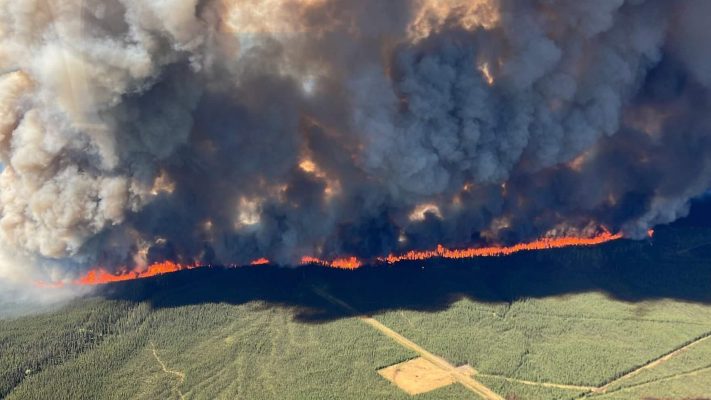After the Donnie Creek Wildfire: Concerns for the Landscape and Carbon Stores
The Donnie Creek wildfire in British Columbia has reached a staggering size of over 5,715 square kilometers, surpassing the entire area of Prince Edward Island.
Experts consider it the fifth-worst fire season on record in the province. The fire’s immense scale has led to worries about the unique boreal forest ecosystem. And the potential irreversible changes to habitats caused by the blaze.
Professor Mike Flannigan from Thompson Rivers University highlights the influence of human-caused climate change in exacerbating wildfires.
A warmer climate leads to increased lightning strikes. A major cause of fires, and allows fires to burn for longer periods.
Rising temperatures also contribute to drying the forest floor, making it easier for fires to start and spread. Without sufficient rainfall to counterbalance the drying effect, more fuel becomes available for fires.
Flannigan suggests that for fires as massive as the Donnie Creek wildfire, it is best to let them burn out naturally. Allowing “Mother Nature to do her thing.” Although this approach has its challenges, it acknowledges the role of wildfires in the natural evolution of forests.
You may also like: Unprecedented Canadian Wildfires Reach Europe, Fueling Concerns Over Record-breaking Season
Concerns for Ecosystems After the Donnie Creek Wildfire

Kevin Smith, manager of the boreal program at Ducks Unlimited, emphasizes that catastrophic fires like Donnie Creek are altering the environment.
The loss of carbon-rich organic soil and the potential replacement of charred trees with different vegetation can have lasting impacts.
The boreal forest, with its black spruce, aspen, pine, and tamarack, could transition toward more grassland savannah-like landscapes due to drier and warmer climates.
Smith raises concerns about the negative consequences of salvage logging in fire-affected areas in the Donnie Creek Wildfire. Logging operations can result in the construction of roads and trails, as well as the proliferation of weeds.
This approach may impede the regeneration of the forest, hindering its recovery and reducing landscape diversity. Smith urges policymakers to consider the value of carbon-rich areas, such as the boreal forest, on par with life and property when formulating future wildfire and forest management policies.





